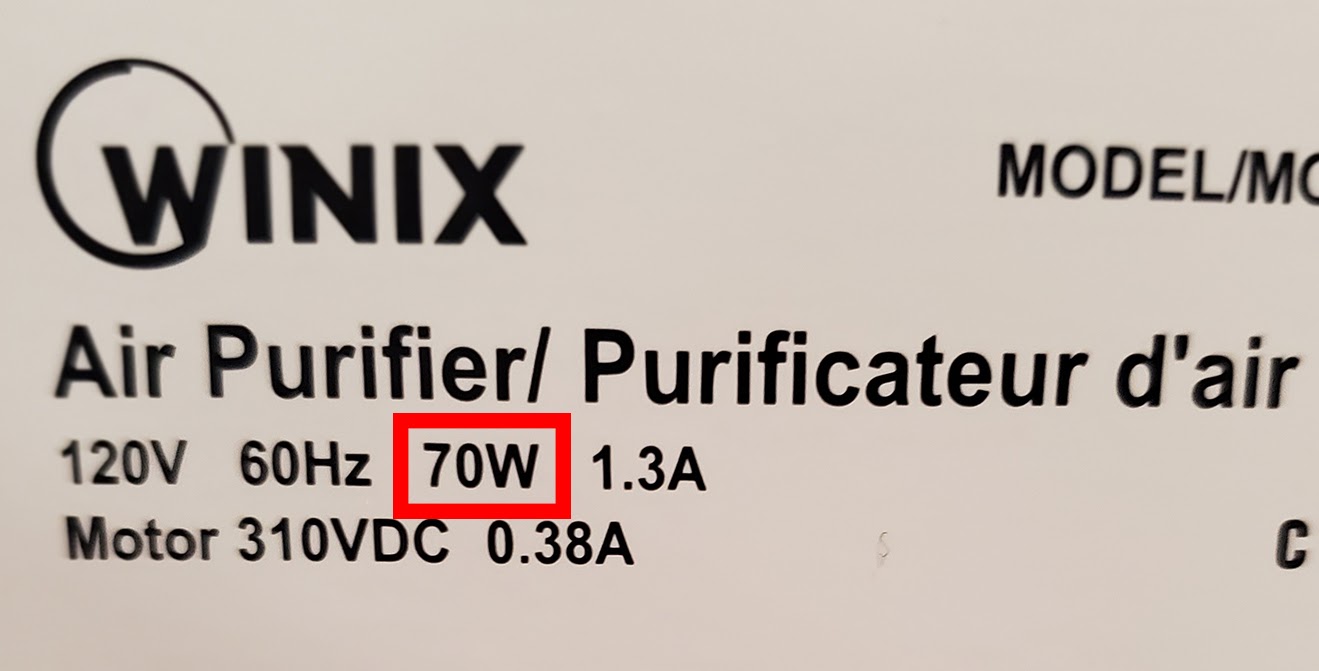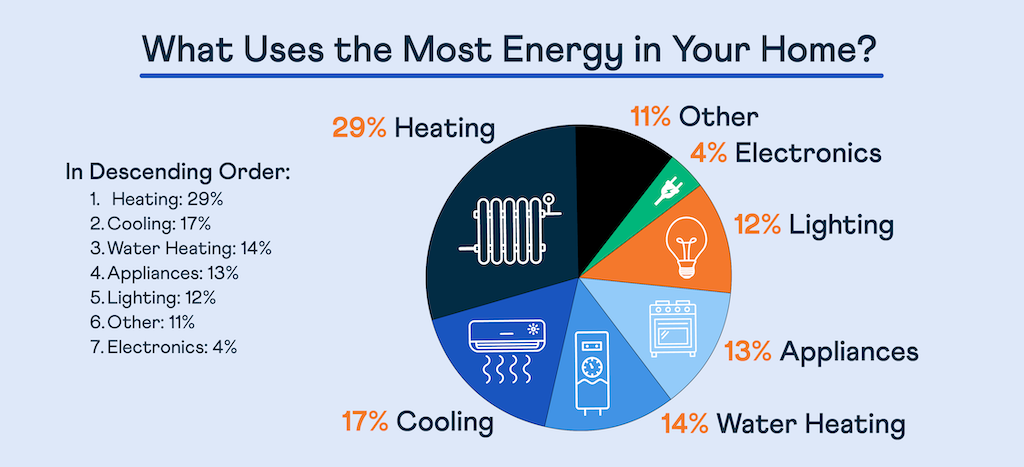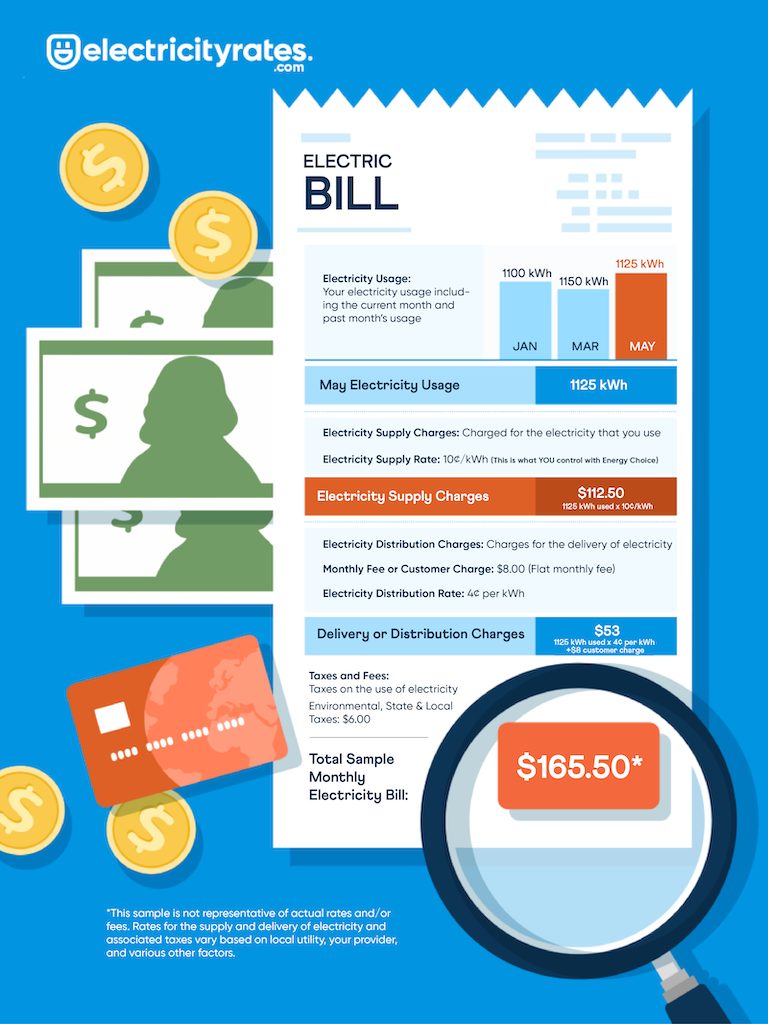The browser you are using is not supported. Please consider using a modern browser.

How To Calculate Your Electric Bill
Key Takeaways
- Step by step instruction on how you can calculate your electricity usage at home to ensure you are being billed by your utility company accurately.
- Understand what appliances use the most energy in your home so you can be more mindful of how and when these appliances are put to work.
- How you can better manage your electricity usage with home monitoring devices.
- What makes up the charges in your electricity bill and understanding what usage, supply and distribution charges are.
Table of Contents

Whether you want to calculate your total electricity bill, see what’s eating up the most energy in your home, or find out how much energy a specific appliance uses, this guide is meant for you.
Calculating Your Total Electricity Bill Cost
Calculate your total electricity bill cost by multiplying the number of kilowatt-hours you consumed by your electricity rate.
A kilowatt-hour is the standard measurement for electricity consumption. And your electricity rate is how much you’re charged for each kilowatt-hour. You can find all this information on your electricity bill. However, your bill only tells you your total usage. It does not show you what specifically makes up your total usage and energy bill. To get a complete picture of your electricity usage, choose one of the following three methods:
- Manually Calculate Your Electricity Bill
- Use Household Averages
- Purchase A Monitoring Device
How To Calculate Your Electric Bill Manually
To calculate your electricity bill manually, you will need to find how many kilowatt-hours each electric appliance consumes. Then, add them together. Do this by following four steps:
- Find the electric appliance’s wattage and estimated monthly use in hours.
- Multiply the appliance’s wattage and estimated monthly use to find watt-hours consumed.
- Divide watt-hours consumed by 1,000 to find the appliance’s total kilowatt-hours consumed.
- Add the monthly electricity consumption of all your appliances together to find your total electricity usage.
Calculating your electricity bill by hand takes more time. But, it enables you to figure out how much each electrical appliance adds to your bill without buying a monitoring device.
Example Of Manually Calculating Your Electric Bill
If you want to use this method with all or multiple electrical appliances, make a list on a sheet of paper. Divide that list into three sections: Electrical Appliance, Appliance Wattage, and Estimated Monthly Use (in hours). This will help you keep track of all the information you need to see how much electricity is per month. Here’s an example of how to calculate your energy bill manually:

Step 1. Find the electric appliance’s wattage and estimated monthly use in hours
The first thing that we need to do is to see how to calculate your power usage. Find the wattage and estimated monthly use of every electrical appliance you want to measure.
The wattage of the product is often labeled on the back of the product itself. It should look like this:

To find the wattage of a product, check for a label on the product. If there is no label, look at the original package or user manual.
If you cannot find the wattage from the two methods above, find an average wattage for the product online. However, this will likely not be as accurate, so the next alternative is to purchase an energy monitor.
If you do not want to perform any calculations, a simple energy monitor is the solution. Providing a fast way to calculate the cost of electricity per appliance. A cheap energy monitor will run you about $20-$30 on Amazon and is one of the most accurate electricity bill calculators. An electricity usage monitor will not only tell you the wattage of the product, but it will also tell you how many kWh it uses.
Unless you are using an energy monitor, your estimated monthly electricity use of a device or appliance is just a best guess. If you don’t have one, write that best guess down. Ensure that your estimated monthly power use is in hours or the calculations will not work.
Determine your estimated monthly electricity use and the product wattage of all the appliances you are measuring. Now, you have everything you need to find the average cost of your electric bill.
Step 2. Calculate how much electricity an appliance consumes
To find how much electricity an electric appliance consumes in kilowatt-hours in a month, use these two formulas in the order they appear:
- Appliance Wattage × Estimated Monthly Use (in hours) = Watt-hours
- Watt-hours / 1,000 = Kilowatt-hours (kWh)

For our example, we will first find the watt-hours of a product.
In our example, we will be using a 135-watt television, that has an estimated monthly use of 30 hours.
To find the watt-hours used, we will use the first formula: Watt-hours = Appliance Wattage * Estimated Monthly Use (in hours)
135 watts * 30 hours = 4,050 watt-hours

Next, we must convert that into kilowatt-hours (kWh). This is because kWh is the unit of measurement for our electricity bills.
To transfer watt-hours into kilowatt-hours, we use the second formula: Kilowatt-hours = Watt-hours/1,000
4050 watt-hours / 1,000 = 4.05 kilowatt-hours

Our 135-watt television used for 30 hours a month comes out to 4.05 kilowatt-hours a month.
Repeat these steps as needed to determine the power usage of all your devices and appliance products.
Step 3. Calculating Total Kilowatt-Hours Consumed
The second step was the hardest part! You may even be done if you only wanted to track the kWh consumption of one or two products.
However, if you measured all of your electrical appliances, you have one last step.
Find the sum of your kWh usage, by adding all of the product’s kWh usage together.
This should give you a number that is relatively close to the kWh usage on your monthly energy bill from the electricity company. Multiply your total kWh usage by your electricity rate (found on your energy bill) to get an amount close to what you pay on your electricity bill.
A quick note about heating and air conditioning. It can be hard to get an accurate measure of your estimated monthly usage of heating and A/C. If you have a smart thermostat, it can tell you how long it operates each month. To estimate your air conditioning or heating’s kWh usage, add up the kWh usage of all your other electrical appliances. Then, subtract this sum from the total energy consumption on your electric bill.


Switching Made Simple
Compare rates from leading providers and make the switch in only a few minutes.
Use Household Averages
If you don’t want to spend the time manually calculating your electricity bill and just want a general idea of how much electricity each of your electrical appliances consumes, you can use household averages.
These are the averages according to Energy Star:

However, this does not reflect your specific usage. If you want the specifics of what’s consuming the most energy in your home, you will need to either manually calculate your bill or purchase a monitoring device. What you choose depends on how much time you want to put into it and how much money you want to spend.
Purchase a Monitoring Device To Calculate Your Electricity Cost
There are multiple devices for home energy monitoring out there, but the one with the best ratings (as of June 2023) is the Sense Energy Monitor. This device is installed directly into your electrical panel and records how much energy specific devices are consuming in real-time.
The only downside to this method is that this device costs $300. There are similar monitors that are less expensive, but according to the reviews, these sensors are not as accurate and have a whole host of other issues.
A more affordable alternative is to get an inexpensive $20 monitor to measure how much electricity a specific device or appliance uses. Then, add up the total usage and multiply it by your electricity rate as we walked through above. We recommend this method to make it easier for you to manually calculate your monthly electricity bill as well. Also, you can simply enter your measured power usage in an electricity bill calculator in kwh to find your estimated electricity cost.
Tech Tools to Calculate Your Electric Bill
Upgrading your technology will also help you learn more about energy consumption. Even if you already know how to calculate your electric bill using pen and pencil, smart technology can provide more significant insights. Companies like Neurio, Curb and Sense offer products that connect to your home’s electrical panel and identify appliances by their unique electrical signatures.
This empowers you to easily view detailed breakdowns and analyses of energy usage using an app or web browser. Fair warning, this information comes with a cost. Energy monitoring systems can cost a few hundred dollars. Installation may require an electrician at an additional cost.
What Electric Charges and Fees Make Up My Energy Bill?
The various sections of an energy bill can seem confusing at first glance. It’s why many consumers, unfortunately, do not pay much attention to their electricity usage or electricity rates and end up paying more than necessary.
Not to fear though. Here is how to read your electricity bill:

For more information see our complete guide on how to read your electricity bill.
You Now Have Everything You Need To Calculate Your Electricity Bill
You can use this page to find out how much energy each electric appliance uses and then use that information to see what you can cut back on to lower your electricity bill.
However, there is only so much electricity usage that you can cut. So if you want to save money on your electricity bill, learn about switching electricity suppliers here on ElectricityRates.com. Switching electricity suppliers can help you save up to 30% on your electricity bill and you don’t even have to change your energy use!